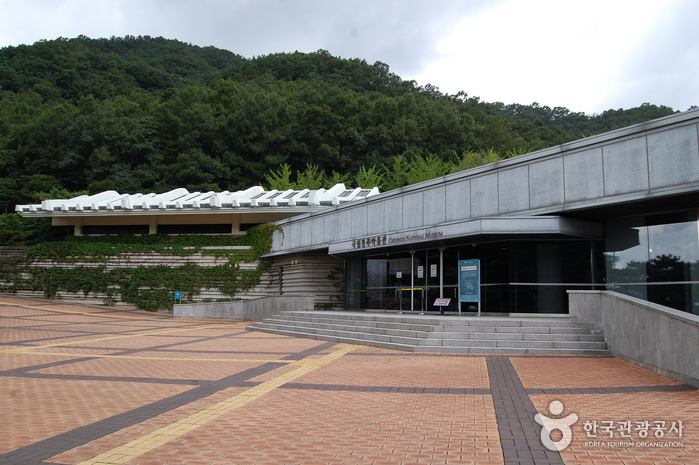
Cheongju National Museum collects and preserves national cultural treasures. The first thing to do when you enter the museum is to obtain various pamphlets at the information desk, from which you can get a lot of information on the museum. The Sangseol Exhibit is the most important place in the Cheongju National Museum. Here you will mainly see displays of artifacts discovered in and around the Chungcheongbuk-do area. In the first division of the exhibit, the Seonsa Room, you can see treasures from the Guseok Period, Sinseok Period, and Cheongdong Period. In the second division, the Samhan-Samguk Room, various artifacts from the houses and tombs of the Samhan and Samguk Periods are displayed. In the Unified Silla-Goryeo (918~1392) Room are displayed the clay pottery, metallic pottery, and gold artifacts used in daily life or related to Buddhism from the Silla and Goryeo Periods. In the fourth Joseon-Go Print Room, you can see the treasures discovered in Chungcheongbuk-do area from the Joseon Period (1392~1910), such as Buncheongsagi and Baekja ceramics. The most carefully decorated room in the Sangsil exhibit is the Children’s Exhibit. It was built to let children experience and learn the culture of Korea’s past. It is also a very helpful place for foreigners who do not know the folk culture of Korea. You can experience first-hand various traditional Korean sounds, such as Dadeumi sound. You can also see a traditional Korean wedding and funeral with all their associated customs in small miniature models. The funeral service shows “sangyeo”, which is not generally known to foreigners. Sangyeo was a device used to carry dead people to their graves. All the miniature models are very detailed and very charming. Besides these, you can try wooden mask printing and the Takbon, as well as tools used by people in the past in the Learning Room. You can try creating clay pottery here as well.
No comments:
Post a Comment